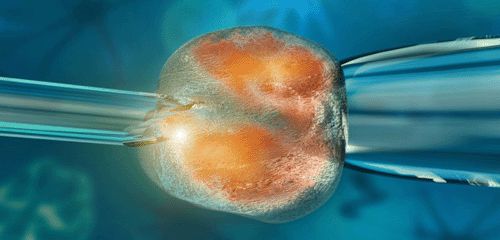科学家首次成功以成人细胞克隆胚胎
 科学家首次成功以成人细胞克隆胚胎
科学家首次成功以成人细胞克隆胚胎
新华网4月21日电 据科技博客网站Gizmodo报道,自从克隆羊多莉18年前诞生以来,科学家以同样技术使用成人细胞克隆胚胎的探索就从未止息。现在,他们终于成功了,在器官移植及其他使用干细胞的治疗技术方面向前迈进了一大步。
去年,一个科学家团队取得重大突破,成功克隆出首例人类胚胎。他们是用胎儿跟八个月大的婴儿提取细胞的。最新的结果发表在《干细胞》杂志上,是从两个分别为35岁和37岁的成人那里提取的皮肤细胞。
以成人细胞克隆出胚胎意味着有一天,我们可以刮去一小块皮,培植出胚胎,生长出来的干细胞就有自己的DNA。这些干细胞可以培育成特定的组织,包括可供移植的器官。
基本的流程跟克隆多莉羊差不多。从成人细胞里提取的包含DNA的细胞核植入捐赠的卵子中,卵子捐赠者的细胞核则被移除。科学家将这一方法运用到20种生物上,但涉及到人类就比较棘手。
当然,这一结果并不意味着克隆宝宝即将诞生。胚胎还缺少一些细胞,不能移植到子宫。这也是为什么科学家一直在拿猴子做实验的原因。
人类克隆技术最大的用处在于,将胚胎作为个人干细胞的来源。目前,我们以体外受精残留或成人细胞作为干细胞的来源,但两种技术都有缺陷。体外受精的干细胞不能完美匹配病患,而基因重组很难完全在成人细胞里完成。
任何以克隆技术进行的治疗都还很遥远,即使有了基础的研究,还存在许多伦理问题。多莉羊诞生已经18年了,克隆技术的道德困境仍未得到丝毫改善。
译者:王俊景
百度新闻与新华网国际频道合作稿件,转载请注明出处。
Scientists Have Cloned Embryos From Adult Cells For the First Time Ever
Ever since Dolly the sheep was cloned eighteen years ago, scientists have been trying and failing to use that same technique to create cloned human embryos from adult cells. Now, they've finally succeeded, in what could a major step toward personalized organ transplants and other therapies that rely on a pool of stem cells。
Last year, a different team of scientists reported a breakthrough in creating the first cloned human embryos ever. That team used cells taken from a fetus and an eight-month-old infant. This new result, published in the journal Cell Stem Cell, tweaks the procedure to make it also work with skin cells from two adult men, ages 35 and 75.
Confirming that human clone embryos can indeed be made with adult cells means we could potentially someday scrape off a bit of your skin, put it in a cloned embryo, and extract stem cells personalized with your DNA. Those stem cells can then theoretically be programmed grow into any type of tissue—including an organ for transplant。
The basic process is the same as the one used to clone Dolly. The nucleus, which contains DNA, is sucked out of the adult cell and carefully placed in a donor egg, whose own nucleus has been removed. Scientists have gotten this process to work in over 20 different species, but humans, until recently, have proven tricky。
This result does not mean that cloned babies will be born anytime soon, however. The resulting embryo was missing some types of cells and would not have been able to implant in the womb. The difficulty of getting embryos to grow in the womb is, in fact, why partly scientists still haven't been able to clone monkeys。
The most promising use of this human cloning technique is in creating embryos as a source of personalized stem cells. Currently, we get stem cells from embryos leftover from in vitro fertilization (IVF)—or we reprogram them from adult cells. Both techniques have their drawbacks, however, as IVF stem cells do not perfectly match the patient's, and the reprogramming may not ever be entirely complete in adult cells, according to some studies。
Any therapies that may result from cloning adult cells is still far, far off on the horizon. Even with this basic lab research, plenty of questions about the moral implications of human cloning remain. It's been 18 years since Dolly—but the ethical dilemmas haven't changed a bit。











